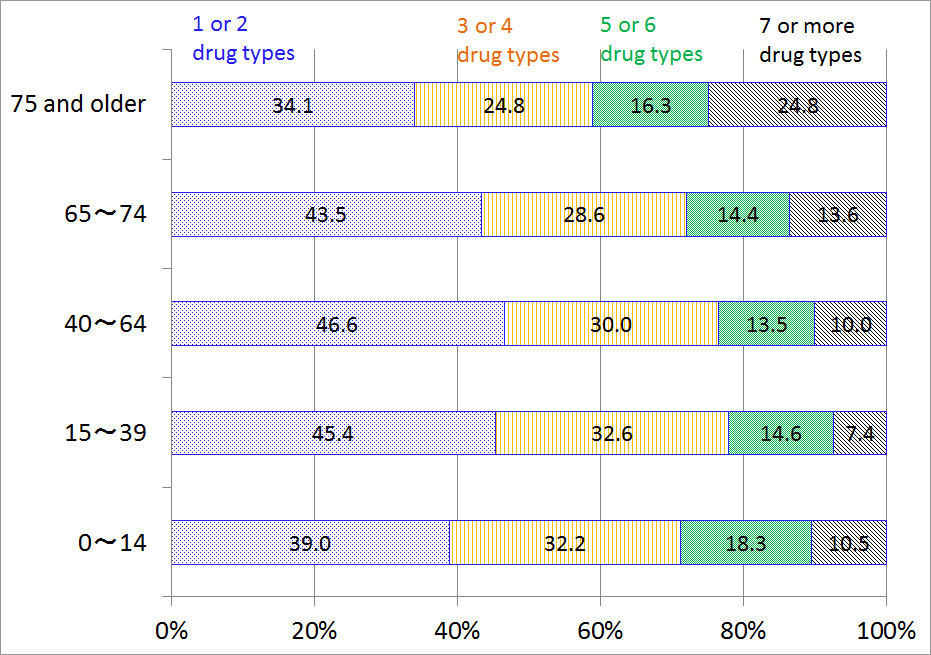Column Finance and the Social Security System 2018.06.15
【Aging, safety net and fiscal crisis in Japan】No.128: The Polypharmacy of Elderly People
In May 2018, the Ministry of Health, Labor, and Welfare announced guidelines on the polypharmacy of elderly people. According to the definition of the Ministry, polypharmacy is a situation that leads to the ingestion of a large number of drugs which results in related problems such as the increased risk of adverse drug reactions, mistakes made when using drugs, and the lowering of medication adherence. Although there are various factors that increase the adverse effect of drugs on elderly people, polypharmacy is considered to be the biggest problem.
Figure 1 illustrates the results of a study of the number of drug types prescribed by a pharmacy in one month for different age groups. For the elderly aged 75 years and older, 24.8% received seven or more drugs, and 41.1% (16.3%+24.8%) received five or more drugs. Important to the interpretation of this data is the fact that if the patient is prescribed medicine from another pharmacy in the same month, this fact is not reflected. In order to resolve this problem and to improve the quality of medical care and patient safety, it is necessary to know of all the medical institutions that the patient is consulting and to understand the pharmaceutical information of all the prescribed medication.
Figure 1: Number of drug types dispensed at a pharmacy

Source: Ministry of Health, Labor, and Welfare
